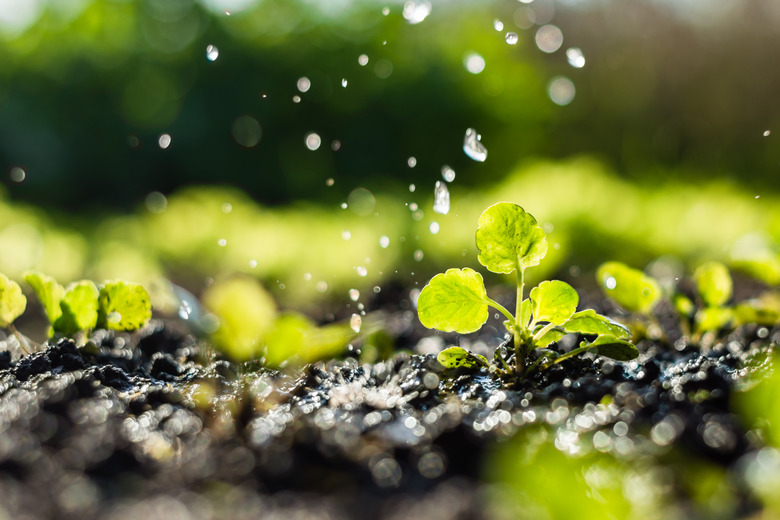What Happens When You Put Saltwater On Plants?
Plants, like people, need a certain amount of salt to survive, but too much can be poisonous. Most plants can tolerate saltwater on their leaves and stems, but they will dehydrate if they drink saltwater from the soil. Even if they don't dehydrate, they may be poisoned by an excess of salt in their systems. The takeaway is to avoid watering your plants with saltwater if you want them to thrive.
Salt's Effect on Plants
Salt's Effect on Plants
Salt is a very common substance in the soil as well in the sea. However, the amount of salt in most soil is very, very low. Plants need a small amount of salinity to survive, since salt is one of the nutrients necessary for plants to grow, so the presence of some salt is necessary. However, saltwater has a high concentration of the mineral, which is why it can be poisonous to most plants.
Effect on Leaves and Stems
Effect on Leaves and Stems
If saltwater is poured over a plant, contact with the leaves and stems will not usually harm the plant. If the saltwater soaks the leaves and stays on them for an extended period of time, the leaves might absorb the salt through their pores. However, most water will quickly be absorbed off of the leaves, leaving at the most a slight salt residue, which can inhibit photosynthesis. The real danger occurs when the saltwater falls on the ground and is absorbed into the soil.
Absorption
Absorption
When saltwater enters the soil, the plant tries to absorb it throughout its roots like normal water. However, saltwater does not allow for osmosis through the plant tissues. It is so dense that the salt solution actually draws water out of the plant, dehydrating and eventually killing it.
Salt Poisoning
Salt Poisoning
If the saltwater does not dry the plant out (it may be receiving diluting water from other sources), there is also a danger of salt poisoning. Too much salt interferes with the chemical processes the plant uses to spread nutrients and convert chemicals into useful sugars. This salt intake will also kill the plant.
Saltwater Plants
Saltwater Plants
Some plants, such as those that grow in estuary-like environments or those classified as seaweeds, survive constant saltwater. They do this by developing thick, waxy coatings on their leaves to block saltwater, and moving salt extremely quickly through their tissues to deposit it outside through their pores before it can damage them.
Cite This Article
MLA
Lacoma, Tyler. "What Happens When You Put Saltwater On Plants?" sciencing.com, https://www.sciencing.com/happens-put-saltwater-plants-6587256/. 23 April 2018.
APA
Lacoma, Tyler. (2018, April 23). What Happens When You Put Saltwater On Plants?. sciencing.com. Retrieved from https://www.sciencing.com/happens-put-saltwater-plants-6587256/
Chicago
Lacoma, Tyler. What Happens When You Put Saltwater On Plants? last modified March 24, 2022. https://www.sciencing.com/happens-put-saltwater-plants-6587256/
